The P-47 Thunderbolt was an absolute monster of a fighter plane. Sporting a maximum takeoff weight of 17,500 pounds, the P-47 was more than twice as heavy as a comparable British Supermarine Spitfire. Power came from a Pratt and Whitney R-2800-59 18-cylinder air-cooled radial engine producing 2,000 horsepower. This was the same powerplant used in the Vought F4U Corsair, the Martin B26 Marauder, the Douglas A26 Invader and the Grumman F6F Hellcat.
The massive Thunderbolt packed eight M2 Browning .50-cal. machine guns in the wings, each with 425 rounds of ammunition. Most American fighters carried six. Thunderbolt pilots called the big plane the “Jug.”

While early models suffered in the climb, subsequent upgrades with wide-chord paddle propellors let the mighty Thunderbolt milk every bit of power out of that enormous radial engine. The heavy fighter could also outdive most anything in the skies. When used to its maximum advantage, this made the P-47 an exceptionally lethal air combat platform.

Arguably the most redeeming attribute of the P-47 was the plane’s toughness. Where liquid-cooled engines were susceptible to the most trivial damage to their radiator systems, the radial-powered Thunderbolt was an absolute beast in combat. There are anecdotes wherein entire cylinders would be shot away on the R-2800 engine, and the big plane would still get its pilot home.

In a world dominated by Lightnings, Spitfires and Mustangs, the big and heavy Thunderbolt represented a radical departure from convention. When equipped with external drop tanks, the P-47 did an admirable job of long-range bomber escort. When unleashed against terrestrial targets, the Jug was pure death against such stuff as locomotives and tank columns. The unconventional design of the big plane had some curiously international origins.
Origin Story of the P-47 Thunderbolt
Alexander P. de Seversky was a Russian national originally from Georgia. The Germans blew his leg off while he was flying combat missions for the Czar over the Eastern Front in 1915. Once he recovered, Seversky resumed flying combat missions with an artificial leg. By war’s end, he was credited with 13 kills.

In 1918, Seversky was sent to the U.S. to study aircraft design. While there, the communists took over in Russia and began killing most everybody they could catch. Seversky wisely stuck around in America, eventually earning U.S. citizenship and serving in the U.S. Army Air Corps Reserve.

Seversky’s first aviation company succumbed to the stock market crash of 1929. However, in 1931, he launched the subsequent Seversky Aircraft Corporation. Once established, Seversky hired Michael Gregor and Alexander Kartveli, two other expatriate Russian engineers. Together, they started out building floatplanes.

The Seversky SEV-3 set a new world speed record for amphibious aircraft. It also laid the foundation for greater things to come. The SEV-3’s broad, semi-elliptical wing eventually found its way onto the P-47 Thunderbolt.
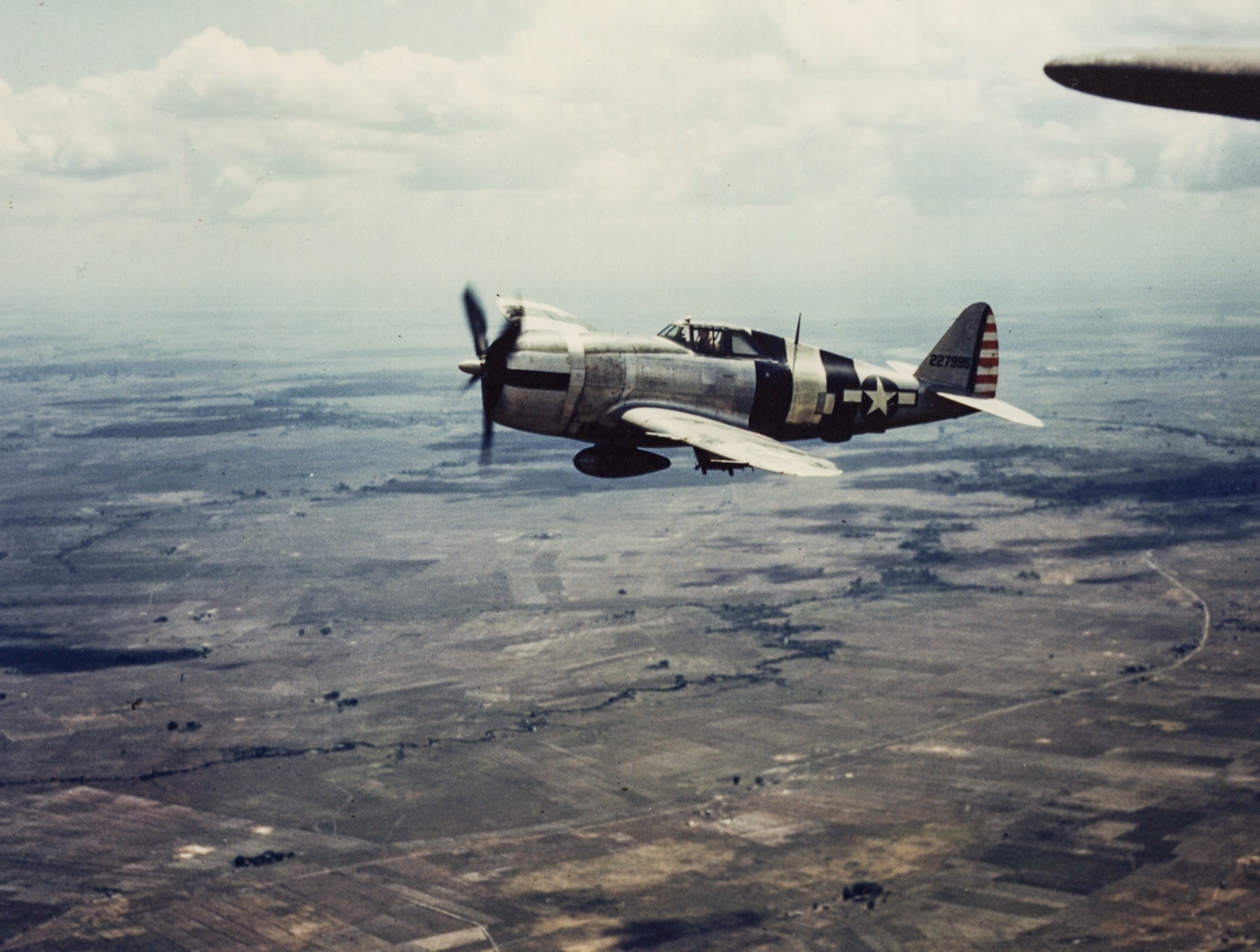
Seversky then produced the BT-8 trainer that they sold to the Army Air Corps. This led to the P35, Seversky’s first fighter aircraft. He sold this ugly little airplane to the Soviets, the Colombians, the Swedes and the Japanese.
Seversky subsequently developed the AP-4, a radial engine-powered fighter that incorporated a radical turbo supercharger. This plane lost out to the Curtiss P-40 in the competition to become the Army Air Corps’ premier pursuit plane. However, Uncle Sam knew he was about to need a whole bunch of combat aircraft, so he still contracted to buy 13 copies just to keep the manufacturing line solvent. These production examples were designated the XP-43 Lancer. Along the way, there was a shake-up in management and Seversky Aircraft Corporation became Republic Aviation.

A total of 272 Lancers were ultimately produced, 108 of which went to the Chinese Nationalists in their existential fight against Japan. After a great deal of extremely accelerated mechanical evolution, the P-43 eventually begat the Republic P-47B Thunderbolt. In addition to all that legendary Thunderbolt ruggedness, the integrated turbo supercharger gave the tubby-looking plane exceptional high-altitude performance.
P-47 Fighter Details
The XP-47B prototype clocked a blistering 412 mph at 25,800 feet in 1942. This was truly stupendous performance for its day. By war’s end, the P-47 had become America’s most-produced fighter aircraft. 15,636 copies saw service.

Where the Lightning and Mustang were delicate thoroughbreds, the Thunderbolt was a draft horse. The Quick Engine Change system built into the airframe cut the time for an engine swap by 60%. The Jug came from the factory with an air conditioner as well as a roomy cockpit and comfortable pilot’s seat. One Jug driver described it as being, “Like a lounge chair.” The Thunderbolt’s eight M2 .50-caliber machine guns gave the warplane a practical rate of fire of around 100 rounds per second.

In addition to ample attention paid to pilot comfort and rugged structural design, the P-47 incorporated some remarkably advanced systems for its day. Among them was a tail-mounted radar threat warning device. This narrow-beam, relatively unsophisticated contrivance was intended to provide the pilot with information on enemy aircraft that might be approaching unawares from behind. The system did not work terribly well, and it could be spoofed by false returns from ground clutter, particularly at low altitudes. However, it was illustrative of the cutting-edge technology folded into the machine.
Practical Performance
The P-47 flew its first combat mission over occupied France on 10 March 1943. Major Don Blakeslee scored the Jug’s first kill, a German FW190, the following month. In short order, the Thunderbolt was seeing combat in every theater of war, save Alaska.
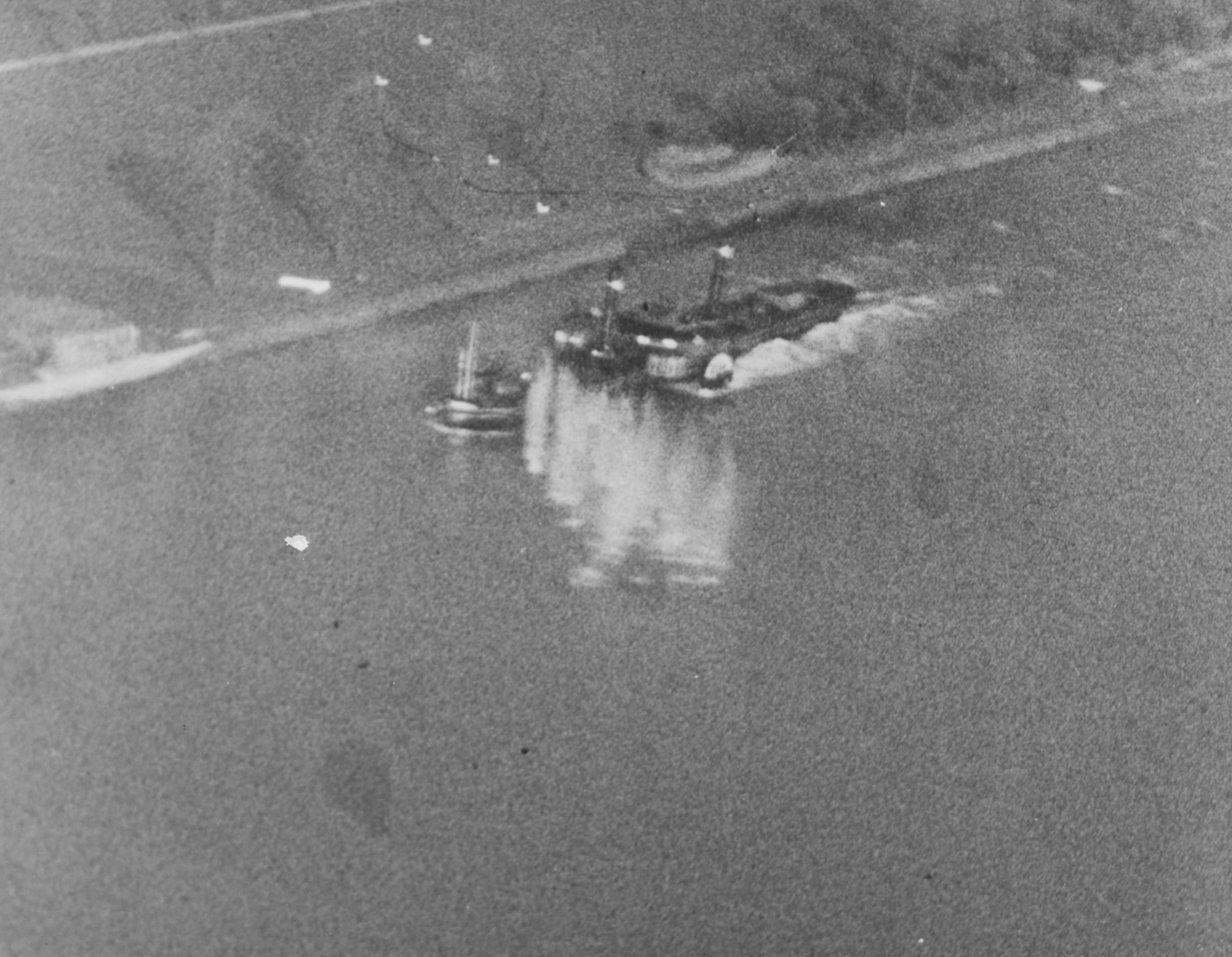
The big Jug was supplanted by the Mustang in the long range bomber escort mission as P-51’s came available, but the Thunderbolt still wreaked holy havoc against the Wehrmacht. By 1943, the P-47 was the USAAC’s primary fighter-bomber. The D-model would carry 1,000 pounds’ worth of external stores to include general-purpose HE High Explosive) bombs and 5-inch HVARs (High Velocity Aerial Rockets). The HVAR was also called the “Holy Moses” for the impressive racket they made when fired.
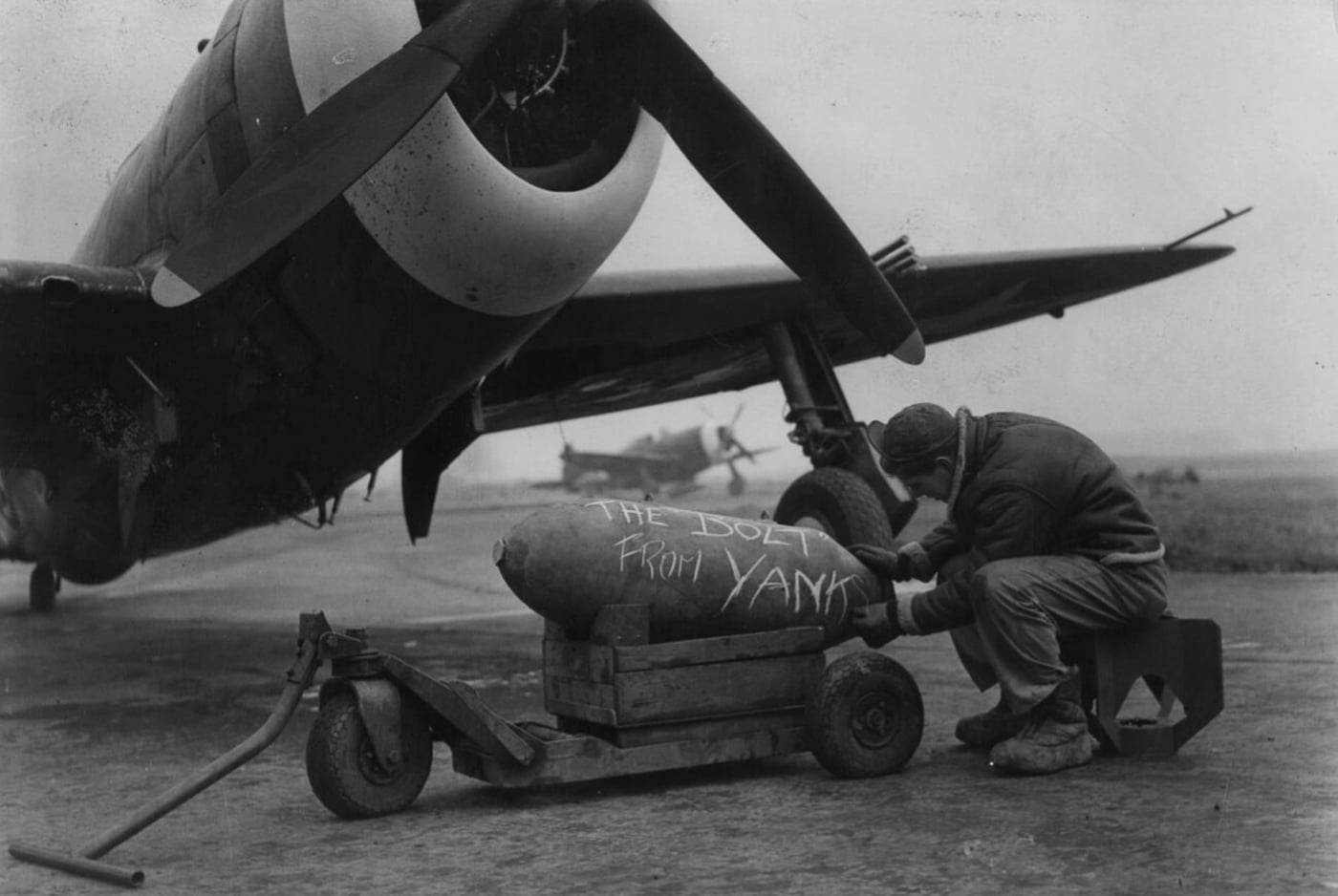
By the end of the war, the P-47 had flown 746,000 sorties and racked up a 4.6-to-1 kill ratio over its Axis opponents. Thunderbolt pilots ultimately claimed 86,000 railroad cars, 9,000 locomotives, 6,000 armored fighting vehicles and 68,000 trucks. In a single engagement during Operation Cobra in July of 1944, Jug drivers from the 405th Fighter Group obliterated a massive German column consisting of 122 tanks, 259 support vehicles and 11 artillery pieces. The Germans called these ground attack fighter-bombers Jabos, and they were justifiably terrified of them.

World War II Story
On 26 June 1943, Robert Johnson was piloting a P-47 Thunderbolt returning from a bomber escort mission in France when he and his squadron mates were jumped by 16 German FW190 fighters. 20mm high explosive cannon shells raked Johnson’s Jug, shattering the canopy and snipping off a chunk of his nose in the process. With his plane on fire, Johnson was horrified to find that the exploding cannon shells had jammed the canopy frame closed.
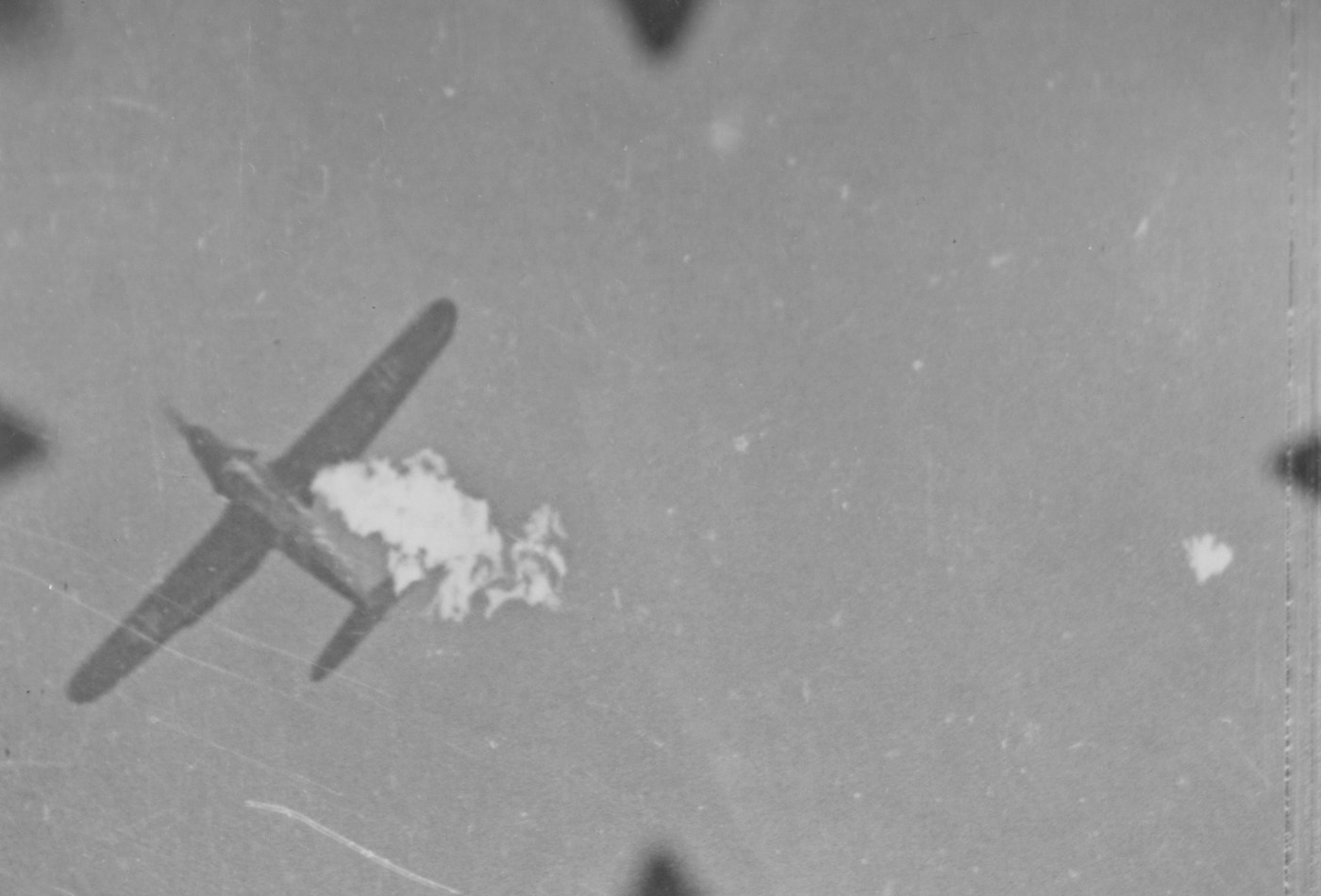
The P-47’s hydraulic system was shredded, and Johnson got a face full of hot hydraulic fluid that left his eyes burning and swollen. Engine oil covered what was left of his windscreen such that he could not see forward. Miraculously, the fire went out of its own accord, and Johnson pointed his crippled bird toward England and safety. Now helpless and alone, Johnson was jumped by Egon Mayer, a German fighter ace who would ultimately be killed in action in March of 1945 with 102 Allied victories to his credit.
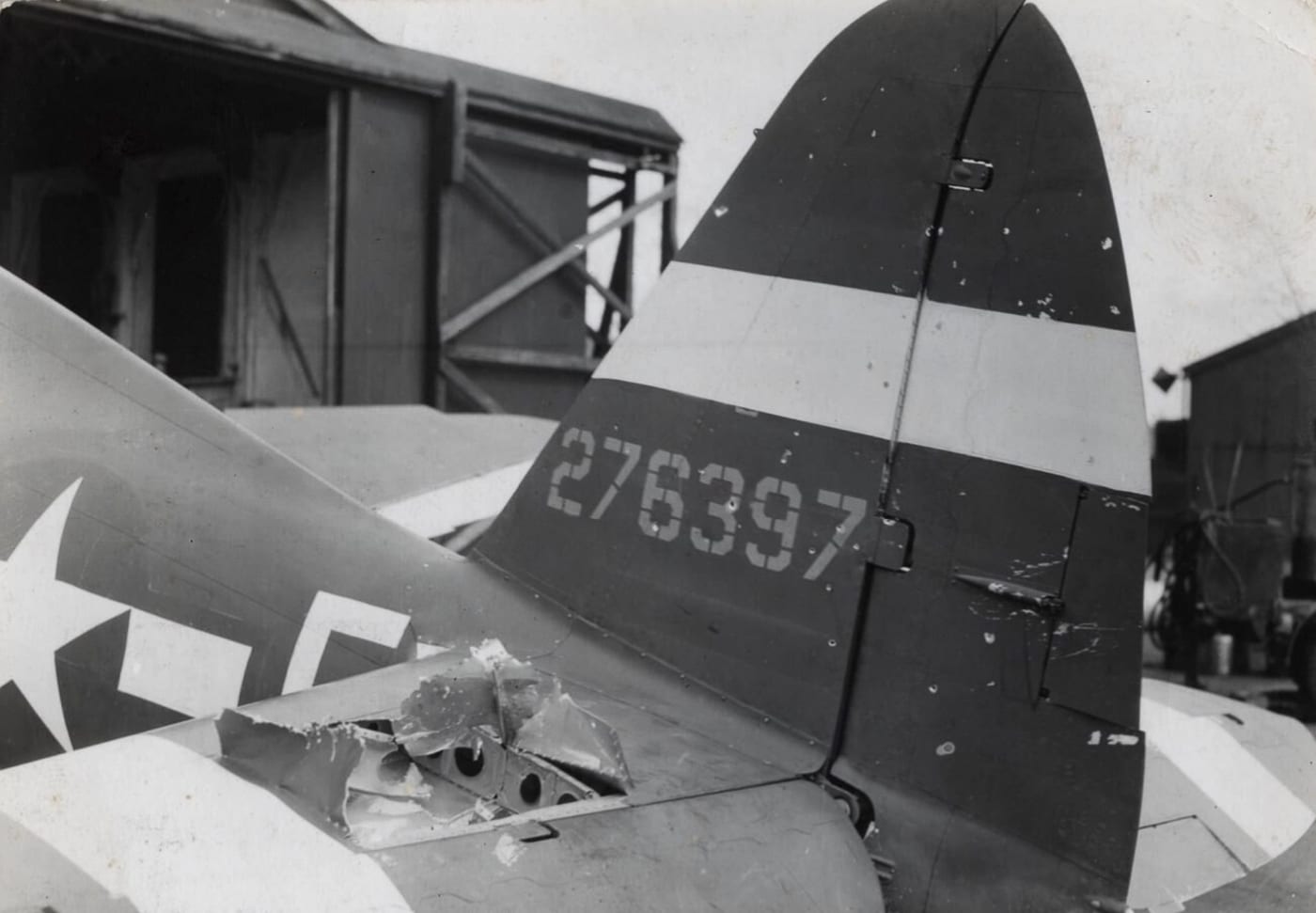
Mayer could tell Johnson’s Thunderbolt was dying, so he took his time. From a range of only 50 yards, the German fighter ace lined up the shattered Jug and opened up with everything he had. Johnson, for his part, just hunkered down behind the armor plate in his seat and took it like a man.
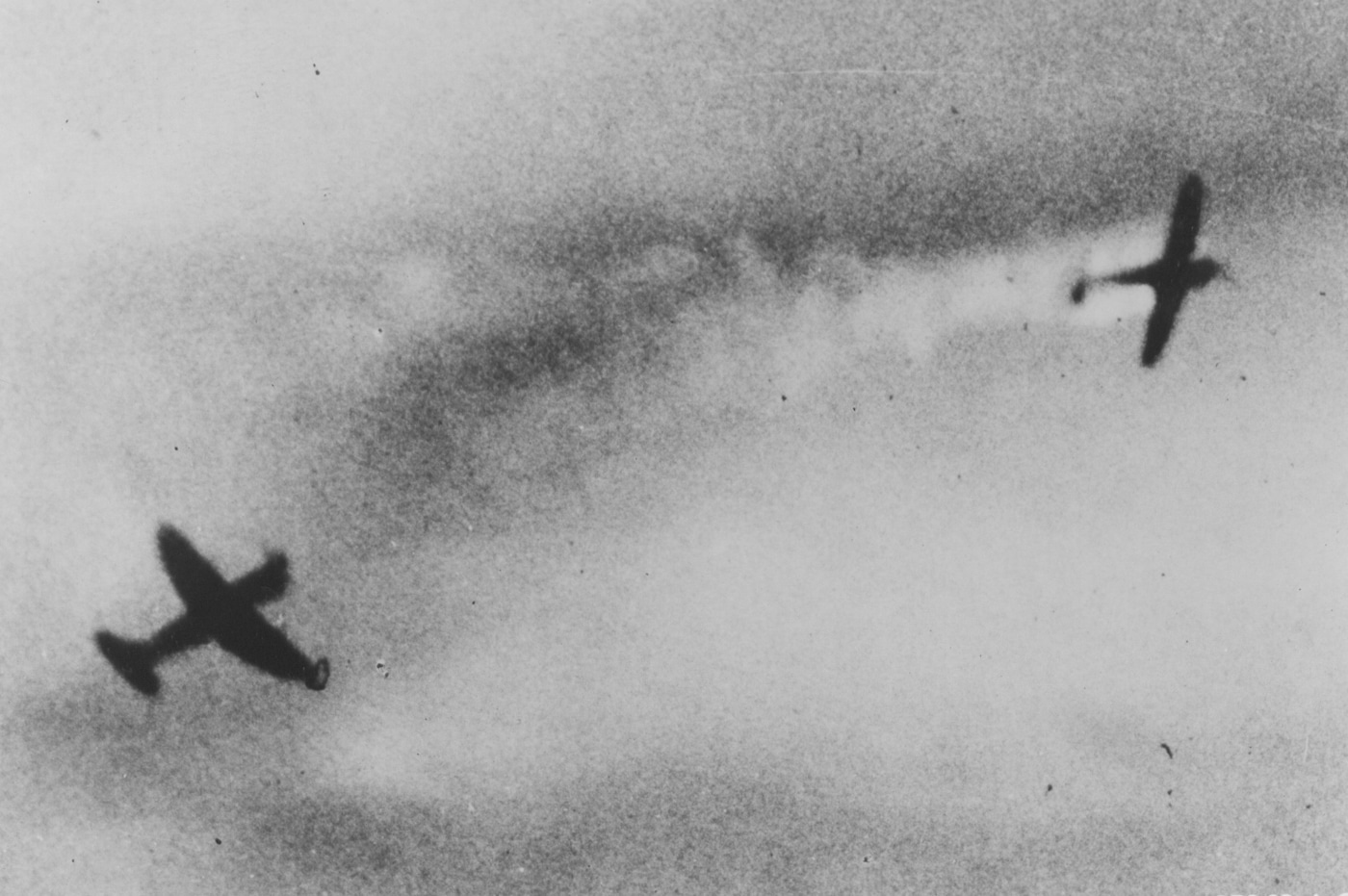
Time and again, Mayer raked the big American fighter with fire from his 7.92mm machine guns and 20mm cannon. By the time the German pilot ran out of ammunition, both Robert Johnson and his plane were shot absolutely to pieces. In addition to his bloodied nose, Johnson had shell fragments in his hands and two machine gun bullets through his right thigh. The plane, however, was hugely worse off.

Having shot his Focke Wulf dry, Mayer ultimately headed home. Johnson miraculously nursed the dying plane back to an English airfield and landed without flaps or brakes. Once safely on the ground, the medics and maintenance guys had to cut the canopy away to get him out. The plane’s armor plate had resisted three direct hits from 20mm cannon rounds. There were five bullet holes through the prop. They stopped counting at 200 rounds that had perforated the big, tough airplane.
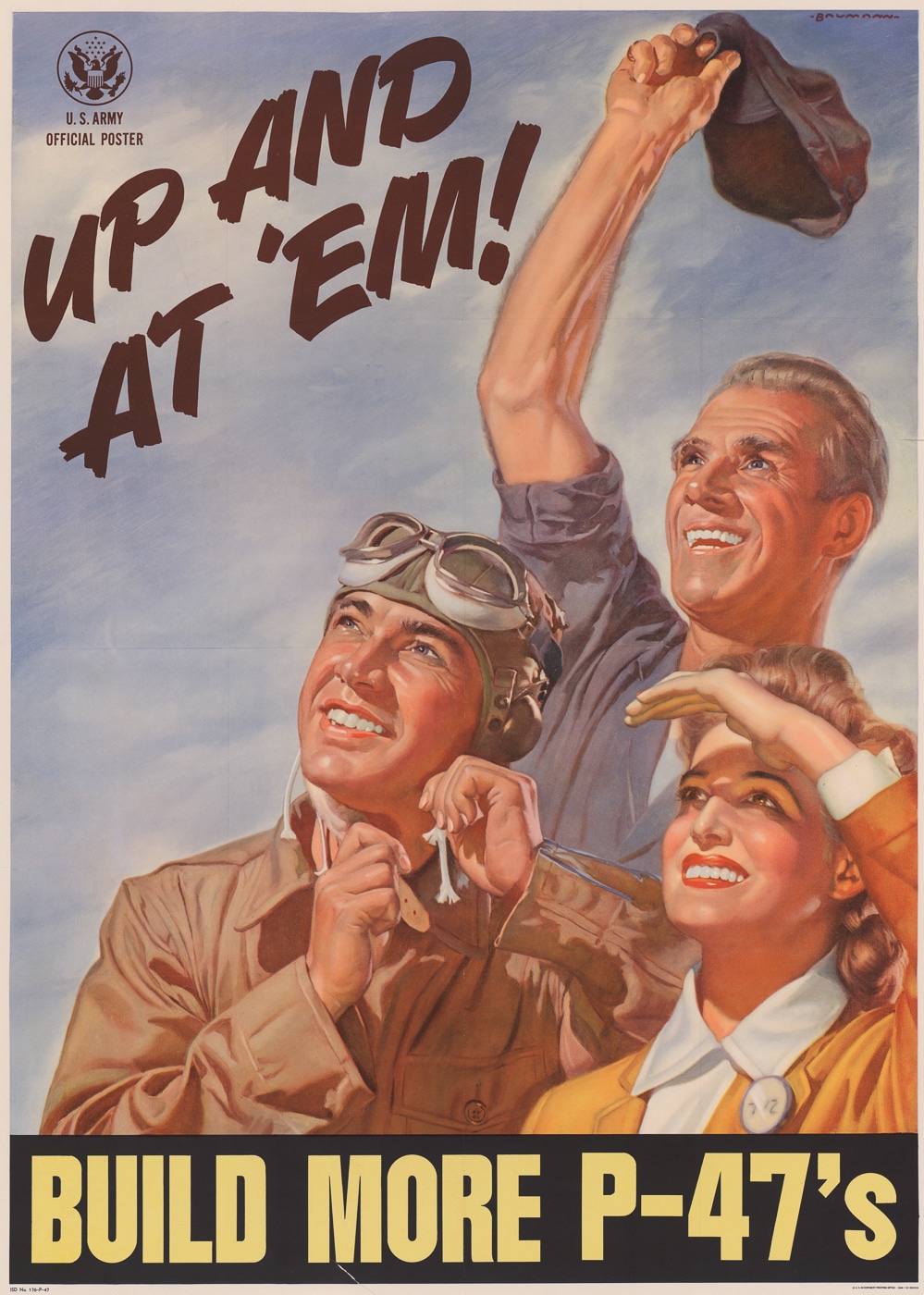
Robert Johnson ended the war with 27 aerial victories. He was the second-most successful American ace in the European Theater of Operations. Johnson later served as chief test pilot for Republic Aviation and died at age 78 in 1998 in Tulsa, Oklahoma, while visiting his nephews and nieces. That rich, full life he owed to the inimitably rugged P-47 Thunderbolt.
Editor’s Note: Please be sure to check out The Armory Life Forum, where you can comment about our daily articles, as well as just talk guns and gear. Click the “Go To Forum Thread” link below to jump in and discuss this article and much more!
Read the full article here








Leave a Reply